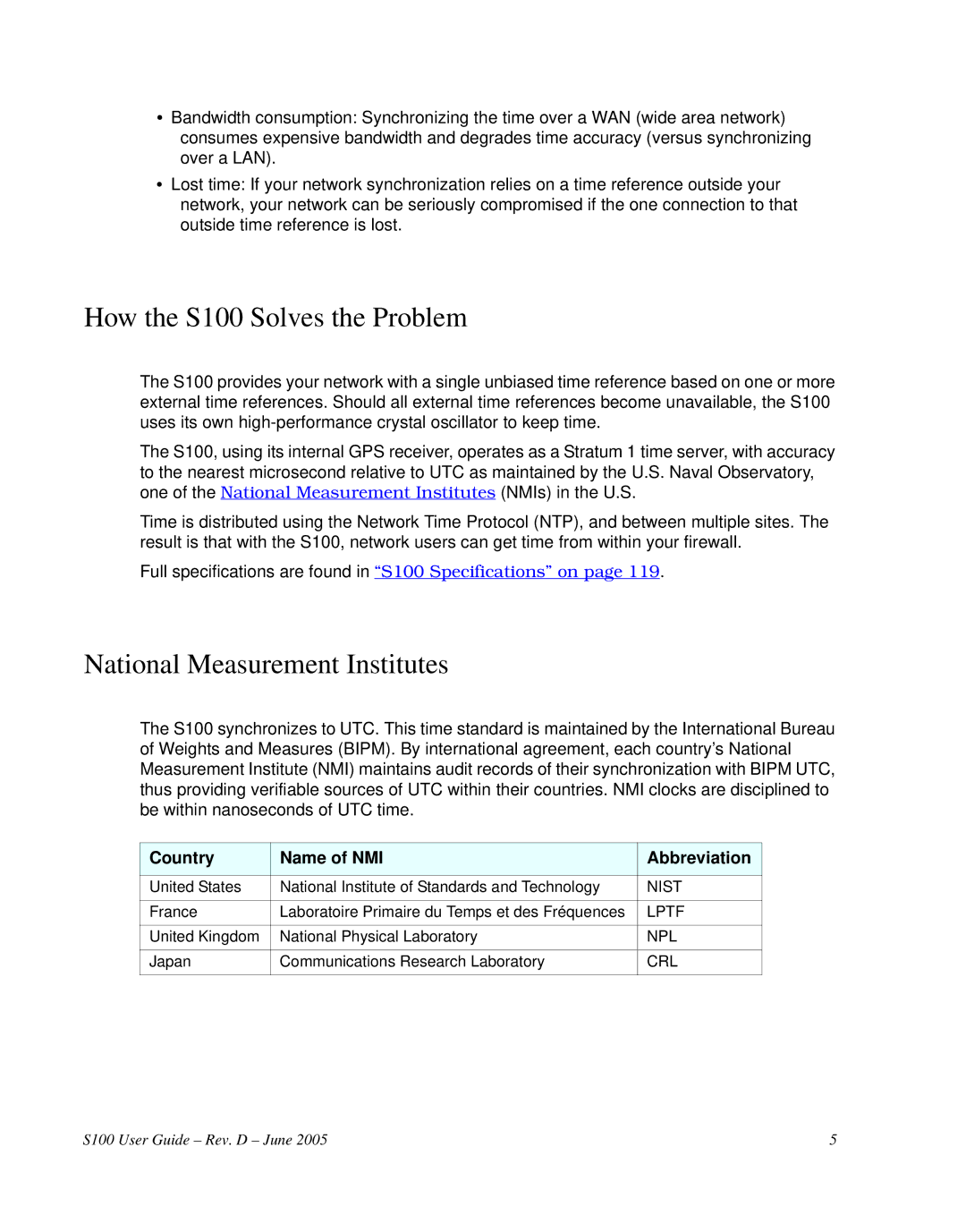•Bandwidth consumption: Synchronizing the time over a WAN (wide area network) consumes expensive bandwidth and degrades time accuracy (versus synchronizing over a LAN).
•Lost time: If your network synchronization relies on a time reference outside your network, your network can be seriously compromised if the one connection to that outside time reference is lost.
How the S100 Solves the Problem
The S100 provides your network with a single unbiased time reference based on one or more external time references. Should all external time references become unavailable, the S100 uses its own
The S100, using its internal GPS receiver, operates as a Stratum 1 time server, with accuracy to the nearest microsecond relative to UTC as maintained by the U.S. Naval Observatory, one of the National Measurement Institutes (NMIs) in the U.S.
Time is distributed using the Network Time Protocol (NTP), and between multiple sites. The result is that with the S100, network users can get time from within your firewall.
Full specifications are found in “S100 Specifications” on page 119.
National Measurement Institutes
The S100 synchronizes to UTC. This time standard is maintained by the International Bureau of Weights and Measures (BIPM). By international agreement, each country’s National Measurement Institute (NMI) maintains audit records of their synchronization with BIPM UTC, thus providing verifiable sources of UTC within their countries. NMI clocks are disciplined to be within nanoseconds of UTC time.
Country | Name of NMI | Abbreviation |
|
|
|
United States | National Institute of Standards and Technology | NIST |
|
|
|
France | Laboratoire Primaire du Temps et des Fréquences | LPTF |
|
|
|
United Kingdom | National Physical Laboratory | NPL |
|
|
|
Japan | Communications Research Laboratory | CRL |
|
|
|
S100 User Guide – Rev. D – June 2005 | 5 |
